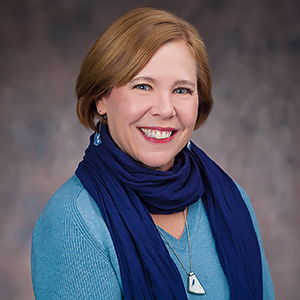Overview of American University
American University is a private research (R2) institution in Washington DC with over 14,000 students. They have a 12:1 student-faculty ratio and an average undergraduate class size of 22 students per class. There are eight separate colleges within the university system: the College of Arts & Sciences (the largest school at AU with more than 100 degree programs), Kogod School of Business, School of Communication, School of Education, School of International Service, School of Professional & Extended Studies, School of Public Affairs, and the Washington College of Law.
The Writing Studies Program at American University rests within the College of Arts & Sciences’ Literature department. This program values students’ innovation, faculty’s Writing in the Disciplines (WID)/Writing Across Curriculum (WAC) program curriculum writing, and the love of writing and its pedagogy. Lacey Wootton (MA) is the Director of the Writing Studies Program and was able to shed some light on the program’s nuts and bolts of operation.
Writing Studies Program
WPA: Lacey Wootton, Director

Courses Offered
The following course prefix “WRTG” stands for “WRITING” and the numbers in the parentheses stand for the credit hours per course. WRTG 100, 101, 102, 103, and 106 are among the required courses, which AU Core required two (2) writing courses.
-
- WRTG-025 STEP Pre-College Writing Seminar (0)
- WRTG-100 College Writing (3)
- WRTG-101 College Writing Seminar (3)
- WRTG-102 College Writing (3)
- WRTG-103 College Writing Seminar (3)
- WRTG-106 College Writing, Intensive (3)
- WRTG-194 Community Service-Learning Project (1)
- WRTG-200 On the Ethics of Rhetoric: The Suspect Art (3)
- WRTG-201 The Art of Persuasion FA1 (3)
- WRTG-210 The Rhetoric of Digital Culture (3)
- WRTG-301 Writing Across the Curriculum (3)
Lacey clarified to me that “even though our program is in the Department of Literature, we don’t call our classes “English” or “Literature” classes—always “writing” classes. That’s been the case for a long time, and it led to our changing our course prefix from LIT to WRTG a number of years ago” (Wootton 2019). I believe this reflects, while maybe not on a hierarchical level, the idea of a separate program giving a separate “mind, energy, and resources” so that the “sole charge…[is] the teaching of writing” (Gottschalk 25).
The overall program’s philosophy is focused on writing across the disciplines, transferable writing skills, and adaptability. Not only can these commonalities be seen on the website’s descriptions of the program, but in the learning outcomes for each first year writing class, available here: Outcomes
Faculty
There are sixty-five (65) faculty members in the Writing Studies Program. Thirty-five (35) of them are full-time, non-tenure-track and the other half are adjunct/part-time. Lacey noted “We have a handful of grad students who teach, after going through the two-semester teaching track in their master’s/MFA program. They are considered adjunct faculty, not GTAs, even if they’re still students.” This could illustrate a more collaborative administrative style for AU’s writing program.
AU’s WPA Position
After talking with Lacey, I don’t think they have what Gunner referred to as a “flattened hierarchy” since Lacey coordinates many of the programs and oversees the courses’ structures. There is an international student coordinator who helps with staff and faculty supporting international students and their faculty; however, all of the Writing Studies Program is mostly run by the WPA.
This seems like a large workload for Lacey, especially since she is in the PhD program at George Mason University. She says that while she’s done with her coursework semesters, “it’s still overwhelming.” She tells me that she gets a month of vacation time every year and in the last year, she’s had to use three weeks of it “to read for exams” and the last week “to take [her] exams.” On the bright side, she notes this division other time helps her keep consistent hours for AU.
Because she took the WPA position long before she started her doctorate program, Lavey notes that she had “a lot of contact already” and “[knew] the institution and how to navigate it — and senior administrators already knew [her] because [she’d] been so active in faculty governance” as chair of their faculty senate, so it was easier to play both roles of WPA and graduate student.
Program Overview
In Peggy O’Neill and Ellen Schendel’s chapter of Field of Dreams, “Locating Writing Programs in Research Universities”. they discussed the stereotypes of research institutions either being mostly run by English departments with many graduate students or “boss compositionists” (186). However, this is where American University’s program stands out. According to Lacey, writing is an invaluable part of AU’s new “Core” (general education) program as there are two writing course requirements (W1 and W2) for first-year students.
She notes, “Most students fulfill that requirement by taking WRTG 100 and WRTG 101 in the fall and spring of their first year. Students who get a qualifying score on the relevant AP or IB exams can take WRTG 106, a one-semester “intensive” first-year writing class. No students “test out” of the W1 requirement.”
While the 101 courses are “themed, developed by the faculty…[whose challenge] is to make sure it’s still a writing course, and not a course about the theme/content”, Wootton clarifies that the 100 level is more meant be a flat writing skills course. WRTG 102 and 103 are versions of 100 and 101 offered to students “in a special program through our Academic Support and Access Center; these students have learning disabilities and receive extra support through ASAC” (Wootton 2019).
For international students, there is a specific WRTG 100 class dedicated specifically for L2 speakers and is taught by faculty with expertise in first year writing and multilingual instruction. After this course, international students take WRTG 101 with the general student population.
The W2 requirement is a one-semester writing-intensive class, ideally a class in the student’s major. They can take that any time after completing their W1 requirement. These classes are taught by disciplinary faculty, not by faculty in the Writing Studies Program.
Keeping Courses on Track
While there is a good bit of curriculum design freedom for instructors due to the lack of mandatory syllabus, there are common learning outcomes and an expectation that “faculty will teach rhetorical strategies, rhetorical awareness/adaptation, information literacy, and generalized forms and moves of academic argument” (Wootton 2019). She notes that there has been a shift toward the “teaching for transfer” approach and stress on rhetorical and genre awareness since the courses are not discipline specific so skills need to carry students across fields.
As the WPA, Lacey “monitor[s] the adjunct faculty for ‘drift’…[meaning] when they might move too far from the outcomes and our core mission.” She also observes full-time/full-term faculty who “are reviewed for reappointment by a committee, so we keep track of our curricular coherence over time” (Wootton 2019).
Common Texts & Philosophy
Teachers also have the ability to use a well of student exemplar writings in the shared text Atrium, an “annual collection of student work, drawn from the College Writing courses.” These works are selected in order to help faculty as well as students navigate different writing projects. Faculty can use these examples as models for genres, examples of how rhetorical moves are made, etc.
Additionally, the program chooses a “Writer as Witness” text, which is a yearly common reading, that students work with in their WTRG 100 or 106 class frequently. They usually have the author come to campus during the second week of classes to meet with faculty and honors/scholar students first and then full first-year classes as a whole. The name “Writer as Witness” formed when the texts were mostly memoirs or personal narratives; however, they have been more often non-fiction or argumentation books recently, so they are possibly rethinking the name.
Other Campus Relationships
I noticed after perusing their website that the Writing Studies Program links students out to many helpful resources, including the Writing Center. Lacey clarified that the Writing Center used to be located in the same building as the Writing Studies Program, so it was more closely tied to the courses. However, when the center was integrated into the library’s student support services, the relationship was weakened a bit.
Works Cited
Gunner, Jeanne. “Collaborative Administration.” The Writing Program Administrator’s Resource: A Guide to Reflective Institutional Practice. Ed. Theresa Enos and Stuart Brown. New York: Erlbaum, 2002, 253-262.
Gottschalk, Katherine. “The Writing Program in the University.” The Allyn and Bacon Sourcebook for Writing Program Administrators. Ed. Irene Ward and William J. Carpenter. New York: Longman, 2002, 23-33.
O’Neill, Peggy, and Ellen Schendel. “Locating Writing Programs in Research Universities.” A Field of Dreams: Independent Writing Programs and the Future of Composition Studies, ed. Peggy O’Neill, Angela Crow, and Larry W. Burton. Logan, UT: Utah State UP, 2002, 186-211.
Wootton, Lacey. “Re: Re: Graduate Student Correspondent for Dr. Christopher Anson’s Writing Program Administration Course at NC State University.” Received by Bethany Van Scooter, January 14, 2019.
